Green architecture – Y. S. Sun Green Building Research Center
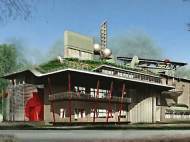 The Y. S. Sun Green Building Research Center (Magic School of Green Technology) of the National Cheng Kung University (NCKU), the first energy-saving and zero-carbon building in Taiwan, has obtained the highest green building certificates from Taiwan’s Ecology, Energy Saving, Waste Reduction and Health (EEWH) and the U.S. Leadership in Energy and Environmental Design (LEED) rating systems.
The Y. S. Sun Green Building Research Center (Magic School of Green Technology) of the National Cheng Kung University (NCKU), the first energy-saving and zero-carbon building in Taiwan, has obtained the highest green building certificates from Taiwan’s Ecology, Energy Saving, Waste Reduction and Health (EEWH) and the U.S. Leadership in Energy and Environmental Design (LEED) rating systems.
Designed by the Joe Shih Architects, the Y. S. Sun Green Building Research Center is the first green architectural education center in the subtropical zone, which is open for research development as well as promotion work of green technology, and it will serve as NCKU’s international conference center. The building consists of three levels above ground one level underground and occupying a total floor area of 4,800 square meters (bit over 51,660 square feet). Although its interior looks quite normal, the exterior of the building is quite quirky because it features various unusual shapes and ornaments.
It has a leaf-like solar panel on the roof, shaped like a leaf and decorated with a huge model ladybug, whose orientation can be adjusted in order to produce more electricity. The tallest part of the building is a frame which holds 14 small wind turbines which are able generate electricity whenever wind speed exceeds two meters per second (about four knots). Unfortunately, wind and sunshine are expected to produce only 5 percent of the electricity used by the building.
The main entrance has a three-layer shading to lower the need for air conditioning. Three solar chimneys consist of a large pane of glass behind which black concrete absorbs the sun’s heat without any moving parts. They are used to draw the warm air up from the inside the building, ensuring constant circulation and reducing the need for air conditioning by 30 percent. Additional insulation is achieved with a green. Low-maintenance drought tolerant species such as snake grass and lantana cover about half of the school’s roof. The watering system is activated by the absence of moisture.
Rather than conventional soil, plants grow in a mix of pea-sized ceramic pellets and soil. The pellets were made by firing reservoir sludge, a raw material Taiwan has had in abundance since 2009’s Typhoon Morakot swept vast amounts of rock and dirt into bodies of water throughout the south. Like soil, the pellets absorb water and thus reduce runoff from rain and watering. Additionally, the pellets lessen the stress on the building because they weigh much less than soil.
China Steel Corp. donated slag, a byproduct of the smelting process. Portland cement mixed with slag is 40 percent stronger than conventional concrete. And because less cement is used, utilizing slag cut carbon emissions during the construction phase by one-tenth. Reservoir sludge was also utilized for partition walls inside the building. Among other recycled materials are corncobs used for the carpet in the 200-seat lecture theater, and discarded plastic bottles for the theater’s curtains.
The toilets in Y. S. Sun Green Building Research Center have adopted the UB-FINE water reduction system of zero power and hand-free access, one of the most unique and environmental-friendly designs, and it can prevent bacteria from spreading and cross infecting.
According to the folks from NCKU, the two hundred tons of serpentine jade cement used as the stone material for the international conference halls, has high degree of alkaline, magnetic field and hydroxyl radicals and can release large amount of far-infrared which can purify air and activate cells, benefiting human health.

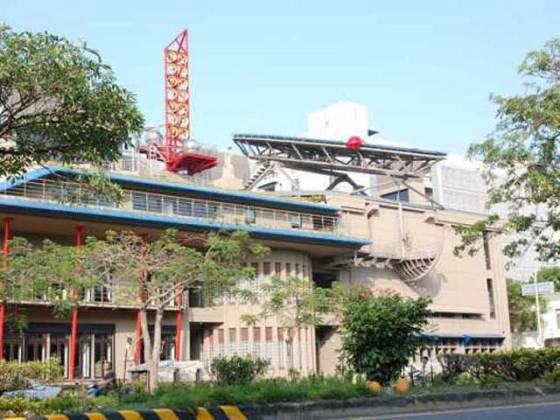
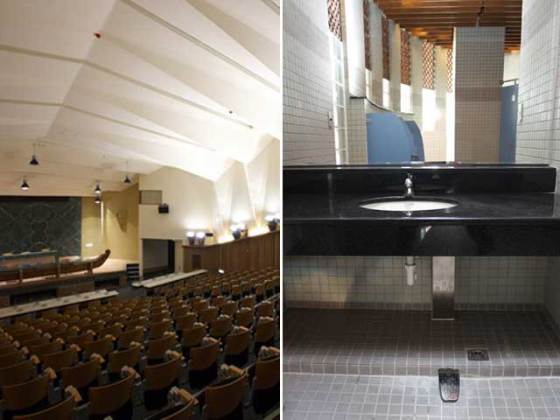
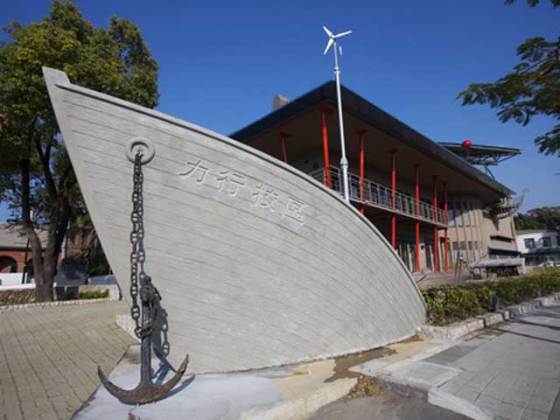
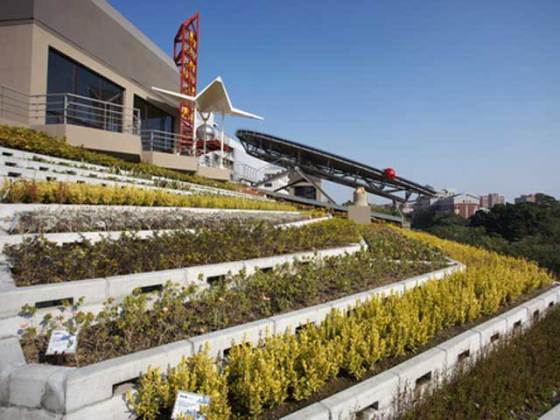








It looks good as long as you don’t go too far away from it.
Parts of the building are very interesting, but it doesn’t look nice as a whole.
Interesting details and hideous overall look.
The article is very interesting. I think, sustainability is the future. I found many projects about sustainable cities and you can see, the world’s mind is on the right way of change.